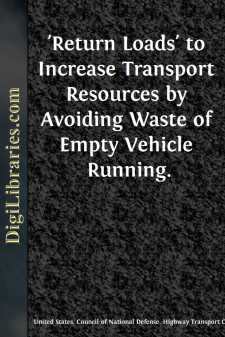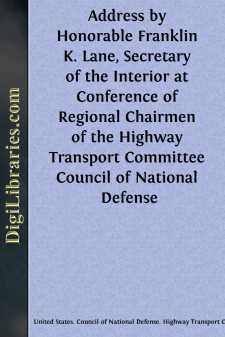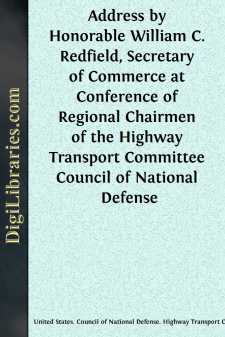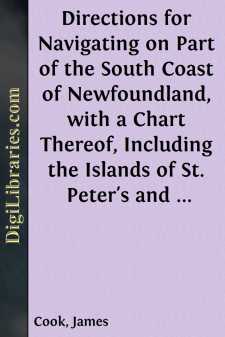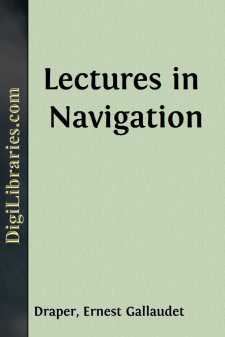Transportation
- Automotive 1
- Aviation 3
- General 5
- Navigation 4
- Railroads 10
Transportation Books
Sort by:
To increase the highways transport resources as one of the means of strengthening the entire transportation system of the country, and for the purpose of avoiding the waste incurred by running transport vehicles empty, return-load bureaus are established. These bureaus are a means of bringing together the shipper having goods to move and the operator of an empty vehicle which is possibly running to the...
more...
PREFACE. “It is the duty—the imperative duty—of every individual (however humble) to express conscientiously, but calmly, his public opinions, for by such means truth is elicited.” Hence it may be permitted the writer of the annexed Letter to observe, that a momentous question is now brought to the notice of the people of Great Britain,—that it ought not to be neglected, until perhaps a voice...
more...
I did not come to-day with the idea of bringing you anything new. On the contrary, I have come here to get the inspiration which association with those from the outside gives. There is no hope for this place unless we can keep in contact with the remainder of the United States. In isolation we think in a vacuum, and it is only when we know what you are thinking of on the outside that we get the impulse...
more...
Mr. Chapin and Gentlemen: It would be a truism to say that I have always been interested in transportation. It has always been a subject of keen interest to me, I presume, because I was born with it. By the fortune of birth I came to live in a region where transportation has been through every one of its stages in this country. If you go back into the history of the Colonies, you will find the two...
more...
by:
James Cook
All Bearings and Courses hereafter-mentioned, are the true Bearings and Courses, and not by Compass. Cape Chapeaurouge. Cape Chapeaurouge, or the Mountain of the Red Hat, is situated on the West side of Placentia Bay, in the Latitude of 46° 53' North, and lies nearly West 17 or 18 Leagues from Cape St. Maries; it is the highest and most remarkable Land on that Part of the Coast, appearing above...
more...
by:
Joseph Tatlow
CHAPTER I.INTRODUCTORY North-West Donegal. A fine afternoon in September. The mountain ranges were bathed in sunshine and the scarred and seamy face of stern old Errigal seemed almost to smile. A gentle breeze stirred the air and the surface of the lakes lay shimmering in the soft autumnal light. The blue sky, flecked with white cloudlets, the purple of the heather, the dark hues of the bogs,...
more...
by:
John Randall
LEGEND OF THE SEVERN, WYE, AND RHEIDOL. (See Illustration on the Cover.) The Welsh are justly proud of their hills and their rivers; they frequently personify both, and attribute to them characters corresponding with their peculiar features. Of the Severn, the Wye, and the Rheidol, they have an apologue, intended to convey an idea of their comparative length, and also of the character of the...
more...
by:
Anonymous
Screw Propellers from 1858 to 1862. During the maple sugar season of the spring of 1858, a well-to-do farmer, of western New York, whittled out a spiral or augur-like screw-propeller, in miniature, which he thought admirably adapted to the canal. He soon after went to Buffalo, and contracted for a boat to be built, with two of his Archimedean screws for propulsion by steam. Although advised by his...
more...
by:
John H. White
American railroads of the early 19th century were cheaply and hastily built. They were characterized by inferior roadbeds, steep grades, sharp curves, and rough track. In spring, poor drainage and lack of ballast might cause the track to sink into the soggy roadbed and produced an unstable path. In winter this same roadbed could freeze into a hard and unyielding pavement on which the rolling stock was...
more...
TUESDAY LECTURE The Compass Everyone is supposed to know what a compass looks like. It is marked in two ways—the old way and the new way. Put in your Note-Book this diagram: The new way marked on the outside of the diagram, starts at North with 0°, increases toward the right through East at 90°, South at 180°, West at 270° and back to North again at 360° or 0°. The old way, marked on the...
more...


